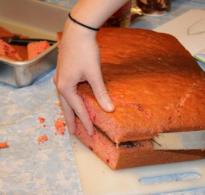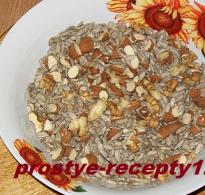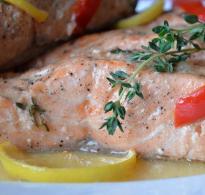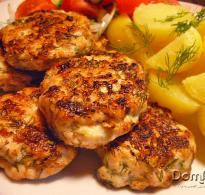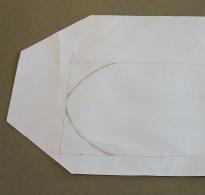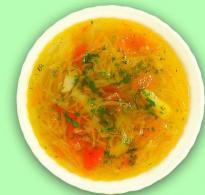Halva - benefits and harms to the human body. Is halva useful - we reveal all the secrets of a sweet delicacy
Many people love it for its delicate taste, but are afraid to include it in their diet because of its high calorie content. Our hero is halva, and the topic of conversation is its benefits and harms. Does halvah have medicinal qualities? And who should not consume this sweetness, even in small quantities?
Halva - excellent taste and a plus for health! Or minus?
It would seem, why compare the benefits and harms of halva, because this is a natural product, which means that it is not able to worsen well-being or provoke adverse reactions. But not everything is so clear.
There are up to 100 recipes for making this dessert, but the main ingredients are always sugar, soap root, honey, vegetable oils, as well as sunflower seeds, sesame seeds, almonds, peanuts, pistachios. And halva is covered with chocolate icing, candied fruits are added to it.
What, besides enjoying the taste and a lot of calories, does our body get with the next portion of this delicacy? It saturates it with dietary fiber, which improves the activity of the digestive tract. Halva will replenish the body's supply of such vitamins: E (positive effect on reproductive capabilities), B1 (supports the nervous system, creates a barrier against infections and viruses, plays a key role in carbohydrate metabolism), PP (increases hemoglobin, protects against thrombosis, participates in fat metabolism , removes cholesterol), F (prevents the development of atherosclerosis, preserves youth, supports the heart).
This culinary product contains a large supply of important trace elements - from phosphorus, potassium, magnesium to zinc and copper. The benefits of halva for the body depend on its main ingredient, so it is worth evaluating the healing effect of sweets separately for each variety.
Sunflower sweetness:
- relieves insomnia;
- brings out of depression;
- strengthens bones;
- protects against the development of dermatological problems;
- provides support to the heart;
- cleanses the intestines;
- treats constipation;
- normalizes the acidity of gastric juice;
- inhibits the growth of malignant tumors in the ovaries, lungs, as well as the intestines and mammary glands.
Sesame halva made from whole seeds:

- normalizes oxygen metabolism;
- slows down the aging process;
- activates cell regeneration;
- helps to recover faster after nervous stress and physical overload;
- serves to prevent cardiac pathologies;
- provides good brain activity;
- improves skin elasticity, gives healthy nails.
Tahini halva from the inner kernels of sesame:

- increases immune protection;
- improves the activity of the digestive tract;
- normalizes the work of the lungs;
- beneficial effect on the organs of vision;
- helps with a breakdown;
- reduces the risk of cancer.
Nutty Sweetness:

- improves memory and attention;
- helps the liver and heart;
- positively affects the state of the nervous system;
- reduces the destructive effect of free radicals, that is, prevents the formation of cancer cells.

- promotes the speedy recovery of forces after serious illnesses;
- helps a sick liver;
- has a positive effect on blood vessels and the heart;
- considered a natural and effective aphrodisiac;
- relieves PMS.
Peanut treat:

- promotes rejuvenation of the whole organism;
- supplies vitamins D, B2, B6, nicotinic acid;
- strengthens memory;
- maintains neural connections in the brain.
As you can see, halva can “boast” of therapeutic abilities.
Is there any harm?
Despite the fact that this product is able to eliminate the deficiency of many valuable micro and macro elements in the body, it is better for those who are losing weight to avoid such "yummy" as halva. Its benefits and harms to the body from the position of caloric content do not inspire optimism. Sunflower halva contains up to 523 kcal per 100 g, sesame halva contains 422 kcal. And if it is covered with chocolate, then this figure increases to 540 Kcal.
Anyone who does not suffer from excess weight, but worries about the figure, can allow himself a teaspoon of oriental sweetness per day. This will allow you to stay slim and charge with positive for the whole day.
Who will have to remove halva from the menu and why?
It should be noted that halva is an ambiguous product, its benefits and harms depend both on the quality and quantity of food eaten, and on the state of human health. Overeating such an oriental delicacy is definitely not worth it. Only 25-30 g is enough per day for a healthy adult. Halva can make you feel worse if you use it together with dairy products, meat, chocolate, and cheese. This combination will deal a serious blow to the stomach.
It is highly undesirable (and even dangerous!) to buy halva with various "chemistry" - dyes, sweeteners, GMOs, preservatives. These additives prolong its shelf life, improve taste, make the aroma more pleasant and rich, and have a positive effect on the appearance of the product, but have a negative effect on the body.
Important! You should not buy halva, covered with oil stains and sugar droplets. This indicates that it is not the first freshness.
Not everyone is allowed to enjoy such oriental sweetness. Halva has a number of features that make it a product that is prohibited for people with chronic diseases.
The main contraindications to the use of halva:
- pancreatitis;
- stones in the bladder or gall;
- diabetes (halva containing molasses is especially dangerous with such a diagnosis);
- periodontal disease, caries;
- obesity;
- diathesis;
- exacerbation of kidney disease;
- allergy to sweet ingredients;
- children's age up to 6 years.
Halva is the most popular oriental sweet made from nuts, seeds and sugar. Initially, halvah began to be made in 5th century in Iran, and from there the recipes for this oriental delicacy gradually spread throughout the Middle and Near East. Today, halvah is also used in European countries, as well as in Ukraine and Russia, it is difficult to surprise anyone with it. There are several types of halva, namely: peanut, nut, tahini and sunflower. The latter is by the way the most common. Is sunflower halva useful and what exactly?
- The use of sunflower halva is shown to people who suffer from disorders of the nervous system.
- Well, this product strengthens blood vessels, improves blood circulation, protects blood vessels from the appearance of cholesterol plaques. It is worth including halva in your diet in the presence of cardiovascular pathologies.
- The use of halva stabilizes the process of digestion of carbohydrates, and also improves the secretory function of the production of gastric juice. Normalizes the acidity of the digestive tract.
- The product has a general strengthening effect.
- It has a good effect on the growth and condition of the hair, as well as the scalp. Be sure to include this product in your diet for those who lose hair due to stress.
- It is especially useful to use sunflower halva for pregnant women, as well as during breastfeeding.
- Halva contains a lot, so it will benefit men and women of childbearing age, and contributes to the activation of reproductive function.
It should be noted that halva is very well absorbed by the body due to the excellent amino acid composition and special manufacturing technology.
Chemical and vitamin composition
Of the minerals in halva are present:, phosphorus and. The product also contains the following vitamins: , F1.
Nutritional and energy value 100 grams of product:
Application in cooking and nutrition
Halva is a fairly popular delicacy, which is usually served as a dessert. It is not used to prepare any other dishes, but is usually consumed with various drinks: tea, cocoa, coffee and others.
 Sunflower halva goes quite well with chocolate, candied fruit, coconut and vanilla, often these components are used in the preparation of this variety of halva.
Sunflower halva goes quite well with chocolate, candied fruit, coconut and vanilla, often these components are used in the preparation of this variety of halva. In turn, you should not use sunflower halva together with, and products, as they do not mix well with each other, and in this combination the product can be absorbed worse by the body, up to the appearance of allergic reactions.
Many are concerned about the question: “Is it possible to use this oriental sweetness during weight loss?” Of course, you should not do this, because halva is a very high-calorie product, plus it contains a large amount of fat, all this will in no way contribute to getting rid of extra pounds, but on the contrary, it can cause them to appear. Therefore, for those who want to lose weight by a couple of sizes, it is better to temporarily exclude this satisfying product from your diet and wait for better times to consume it.
How to choose a quality product
Packed halva- carefully study the packaging and composition for the presence of emulsifiers, flavors, dyes and preservatives, because they are very harmful to the quality of the product. Natural halva should not contain any additives or other chemicals. The best option is to buy halva in a transparent package, then you can evaluate it by its appearance. There are also some nuances here:
- If sugar droplets are visible on the product, the manufacturers saved on the base and put too much caramel instead of seeds.
- Fat drops indicate a violation of production technology.
- A dark patina indicates improper storage or an expired implementation term.
Bulk halva- here it is also important to consider a future purchase:
- The presence of husks is a sign of low quality.
- Fresh halva should be light, brittle, have a clear layered-fibrous structure.
- On trial, a quality product does not stick to the teeth and does not have a bitter aftertaste.
- Check with the seller for the period of sale of the product - loose halva is stored for no more than a week in order to prevent the oxidation of fats.
If we talk about packaged halva - here, thanks to vacuum packaging, the product can be preserved up to six months, and in cardboard - about two months. After opening, transfer the halvah to a ceramic or glass container with a lid and keep in the refrigerator.
In general, it is not recommended to purchase halva on the market due to its poor quality. And we should not forget that improper storage of the product (especially sunflower halva), which is quite often observed in retailers, can lead to the formation of mold dangerous to health.
Harm and contraindications of sunflower halva
Harmful halva can be, firstly, in case of excessive consumption or if there are contraindications to its components, and of course, a low-quality or expired product will bring harm.
Due to its increased sweetness, halva can be harmful:
- with diabetes;
- overweight people;
- in case of pathologies of the digestive tract;
- in the presence of contraindications to the use of seeds;
- with individual intolerance.
In the case of pancreatitis, cholecystitis and other liver pathologies, the harm of halva is due to the fact that it is difficult for the stomach, which does not work properly anyway due to illness.
 Also, the harmfulness of the product lies in a bad basis. According to research conducted at the University of California, it has been proven that seeds (especially sunflower seeds) over time accumulate cadmium. This means that expired halva can provoke intoxication.
Also, the harmfulness of the product lies in a bad basis. According to research conducted at the University of California, it has been proven that seeds (especially sunflower seeds) over time accumulate cadmium. This means that expired halva can provoke intoxication. To date, many manufacturers in the production of halva use different sweeteners that contain GMOs, so choose this oriental delicacy very carefully. The same applies to any chemical additives, flavors, emulsifiers and other chemicals.
Another obvious disadvantage of sunflower halva is that it is very strong allergen. The most reasonable option is to enjoy an oriental dessert separately, not on an empty stomach, but not on a full stomach either (just like we eat melon or watermelon, for example). This will help the body to better absorb this product.
So that sunflower halva is a joy to your body and does not bring any unpleasant consequences with it, buy the product only in trusted places and do not exceed its consumption rate.
Have you read the article and did not find any interesting or important fact about sunflower halva in it? Be sure to tell us about it in the comments, which are located immediately after the article! Share your experience with others!
What is halva and where did it come from? Halva is an oriental dessert, translated from Arabic means "sweetness". For the first time it began to be made in Iran. Over time, gaining popularity, it spread throughout the world, and no one knows how it got to Russia.
At first, only beauties from the harem got the delicacy. But since the product is too high-calorie, warriors began to use it. All recipes for making treats were classified. The secret of the recipe was discovered after the soldiers returned home from the Crusades. So halva got to the territory of Europe.
Halva: useful properties
 The main property of sunflower halva is to increase the level of hemoglobin in the blood. This is due to the fact that it contains a large amount of iron and copper. Copper is the main catalyst in the production of hemoglobin.
The main property of sunflower halva is to increase the level of hemoglobin in the blood. This is due to the fact that it contains a large amount of iron and copper. Copper is the main catalyst in the production of hemoglobin.
- Helps to cope with insomnia, stress, calms the nervous system.
- Restores acid-base balance.
- Helps the body recover from illness.
- The product contains a huge amount of minerals useful for the heart, these are iron, phosphorus, calcium, manganese, zinc.
- Helps speedy healing of wounds.
- This product is good for teeth, gives shine to hair, rejuvenates the skin.
- Restores blood pressure.
- Improves memory.
- Stops the growth of benign and malignant neoplasms (mammary gland, ovaries, intestines).
- Sesame halva is useful for athletes. It helps to relax the body and restore strength after long physical training.
Halva - composition
In total, there are about 100 varieties of halva. Its composition may vary. The main types that can be found in stores are: sunflower, nut, combined, sesame and chocolate.

In addition to fragrant, original taste, it has exceptional chemical composition. This includes minerals: potassium, calcium, magnesium, iron, zinc, food acids and a large amount of protein.
What is halva made of, manufacturing process
 The main ingredients that make up the product are natural honey, sugar, soap root, sunflower seeds or nuts. Crushed nuts are mixed with caramel, beating everything until smooth.
The main ingredients that make up the product are natural honey, sugar, soap root, sunflower seeds or nuts. Crushed nuts are mixed with caramel, beating everything until smooth.
In order for its structure to be correct, in a mixture add soap root, but this is only in industrial production, it is rarely used at home. Ascorbic acid is used as an antioxidant. If desired, flavor-enhancing ingredients such as raisins, vanillin, or cocoa are added to the mixture.
 The sweet taste of halvah is given by sugars, and the carbohydrate content reaches up to 54 g per 100 g of the product. Its calorie content is very high, like in chocolate, but its benefits are much greater. 100 g contains up to 500 kcal.
The sweet taste of halvah is given by sugars, and the carbohydrate content reaches up to 54 g per 100 g of the product. Its calorie content is very high, like in chocolate, but its benefits are much greater. 100 g contains up to 500 kcal.
Sesame and almond halva has the lowest calorie content, while in sunflower it reaches up to 512 kcal.
For people who are watching their own figure, the consumption of the product should be limited or consumed in small portions.
The benefits of halva for the female body
Oriental delicacy contains vitamins B1, F1 and phytosterol, which is very useful for women. Thanks to the regular use of treats, sleep and mood improve, depression and PMS symptoms disappear.

Halva for pregnant women
 If there are no contraindications, then it will be very useful for pregnant women to use sunflower halva in their diet. Folic acid contained in the product helps the formation of bone tissue in the fetus.
If there are no contraindications, then it will be very useful for pregnant women to use sunflower halva in their diet. Folic acid contained in the product helps the formation of bone tissue in the fetus.
Vitamins E, B1, PP and F1 will provide additional nutrition to hair, nails and skin and will not allow anemia to develop. For breastfeeding mothers who want to continue breastfeeding, it is recommended to eat a healthy treat. Milk will be produced more and its fat content will increase.
To prevent the baby from developing an allergy, you should eat a piece of the product up to 10 grams. If after a few days an allergic reaction does not appear, then the portion can be increased. Gradually bringing up to 300 grams per day.
Halva for diabetes
 With diabetes, this product is contraindicated. Due to the lack of insulin in the body, produced by the pancreas, blood sugar rises.
With diabetes, this product is contraindicated. Due to the lack of insulin in the body, produced by the pancreas, blood sugar rises.
Therefore, people with diabetes should follow a certain diet. But do not be upset, for such people they make special kind of halva. Instead of sugar molasses in its base, fructose is used.
Harm from halva
 You can not use the product in unlimited quantities, otherwise all the benefits of it and the aromatic taste will evaporate.
You can not use the product in unlimited quantities, otherwise all the benefits of it and the aromatic taste will evaporate.
- Oriental sweetness can cause allergies and metabolic disorders if it contains a large amount of artificial colors, preservatives and synthetic emulsifiers.
- Due to the high calorie content, those who want to lose weight or people who are obese should not use this product.
- For people with cholecystitis, gastritis, pancreatitis, the product is completely prohibited. Even a small piece eaten can cause an exacerbation of the disease, since its composition is too heavy for the body.
- Made sweets based on sugar molasses are prohibited for people with diabetes.
Important! In order for the body not to be harmed in the first place, the product must be fresh and high quality. If it has expired or was stored incorrectly, cadmium accumulated in the seeds can provoke poisoning.
 It is recommended to buy halva packaged, hermetically packed. The packaging will indicate the composition of the product, the expiration date and conditions for proper storage.
It is recommended to buy halva packaged, hermetically packed. The packaging will indicate the composition of the product, the expiration date and conditions for proper storage.
In addition, the packaging protects the product from contamination. It must be undamaged, otherwise the shelf life of the product is reduced.
- A quality product should be free of oily traces. Droplets of fat that appeared on the surface and places with darkening show that the sweetness was stored incorrectly and microbiological spoilage began.
- If the technological process was violated during the manufacture of the product, then the halva will be with hard caramel streaks.
- If, when cut, the product has smooth edges and does not crumble much, this indicates that it is of high quality.
It is better to spend more time when choosing halva, but make sure that it is of high quality and will not harm your health.
In order for sunflower halva to keep fresh longer and benefit the body, you should know how to store it properly:
- the first thing to do is to remove the packaging in which it was sold;
- the product is put into glass or ceramic dishes, covered with a lid and stored in a refrigerator or in a dry, dark place with a temperature of up to 18 degrees.
In the East they say: "halva is a sweet road to motherhood." It is no coincidence that for many years she remained a favorite delicacy of harem seductresses - this nut-caramel dessert strengthens nerves, preserves beauty and charm, and protects women's health. And modern nutritionists are sure that oriental sweetness is useful not only for beautiful ladies, but also for strong men and mischievous children. The main thing is to choose the most delicious and high-quality halva for your family tea!
From Persian chefs to merchant Sviridov
Halva, benefits and harms, calorie content, chemical composition - all these "little things" did not bother the inhabitants of Persia - modern Iran at all. The dessert was invented back in the 5th century BC, whole dynasties were engaged in the manufacture of sweet yummy, and the masters of halvich were proudly called kandalatchi. The main task of these cooks was one thing - to keep the signature recipe a secret from prying eyes. Therefore, it was passed down strictly from father to son.
The first regular customers of Persian confectioners were the wives of the sultans - in the harems, sweet halva from nuts and seeds was sold with a bang. Then the Greek warriors laid eyes on a nutritious dish - both tasty and nutritious, and stored for a long time. To support forces in campaigns - an ideal option! And in Egypt, halva remains the best breakfast of champions today. They produce a special soft halva-spread, and sandwiches with such a nut miracle will turn even an ordinary morning into a real oriental fairy tale...
The oriental fairy tale came to Russia thanks to the enterprising Greek Kazi, who in Odessa set up the production of sesame goodies and took it to neighboring countries. But sunflower sweetness was invented by an ordinary Russian merchant Sviridov - in 1903 he married a Greek woman Medea, and she gave him this luxurious business idea. And even if the dessert doesn’t look like the Golden Fleece from the ancient sorceress Medea, the real sunflower halva is also worth its weight in gold!
What are they made of?
Grated sunflower seeds, sugar (and sometimes pieces of peel) and an amazing taste that melts on the tongue - this is how we remember oriental sweetness from childhood. But halva is not so simple - its composition can be surprisingly diverse.
In the East, there is a strict division into 2 types of halva. One is made from sugar, nuts or seeds. The other is made from flour, vegetables, special beans. It is very difficult to find such a peculiar yummy in stores - only sometimes poppy or pumpkin halva is sold in online health food stores. But walnut can be found in any store or department with oriental sweets. Varieties of halva depend only on the imagination of the confectioner:
- classic sunflower;
- sunflower with cocoa and raisins;
- peanut;
- sesame and;
- cedar;
- pistachio;
- almond;
- sesame with hazelnuts;
- tahini with almonds, etc.
Halva composition
Real, traditional halva is nuts, sugar and honey. A foaming agent is also added, thanks to which the dessert becomes so lush and melts on the tongue. At home, this is usually egg white, in large-scale production - soap root,. Everything is exclusively natural - with halva it cannot be otherwise!
The main part of the product is nuts and seeds, thanks to them the sweetness is so useful. As part of halva - vitamin E, nicotinic acid and the most useful micro and macro elements - calcium, phosphorus, magnesium, potassium, iron.
The treasure of any halva is a complex of unsaturated fatty acids, especially Omega 6. Such acids not only bring us health and vitality, they also help the absorption of fat-containing vitamins - A, E, D and K. Therefore, a halva dessert will especially decorate a morning omelet, healthy lunch of green salad with and, and.
The main thing that halva can alert is calorie content. Nuts and seeds are not dietary, so the calorie content of classic sunflower halva is 516 kcal. Peanut is a little easier - about 500 kcal, and the most sparing one is almond. Therefore, during a strict diet, cracking halva is not recommended, and on ordinary days it will serve as an excellent substitute for useless cakes and waffles on confectionery fat.
What is useful?
A handful of nuts or seeds is a unique dish. It contains healthy fats, invigorating vitamins, healing minerals. Nutritionists do not get tired of reminding about the benefits for the brain, skin, immunity, seeds for nerves. All these healing properties are preserved by sunflower halva. The benefits and harms of this delicacy are in no way inferior to ordinary roasted seeds.
- Strengthens nerves, restores sleep and helps to cope with stress.
- The calcium-potassium-sodium-magnesium complex improves blood composition, regulates blood pressure and supports the heart.
- Removes from the blood, prevents the formation of fatty cholesterol plaques that clog blood vessels.
- Strengthens teeth and bones, helps prevent early osteoporosis.
- Improves brain function, supports attention and memory, activates the thought process and pushes back senile dementia.
- Strengthens immunity. In the autumn-spring cold period, a piece of halva with warm rosehip broth will be an excellent afternoon snack.
And why is halva useful for women, why were the Sultan's wives the first fans of the oriental sweet miracle? Omega-6 fatty acid and magnesium with phosphorus strengthen the fragile female nerves, help to cope with mood swings during PMS. They also nourish hair and nails, provide even velvety skin, restore the radiance of the eyes and a good mood. Vitamin E has a positive effect on the reproductive system, increasing the chances of getting pregnant and easily bearing a healthy baby.
Lovers of the most delicate nutty delicacy often worry - is it possible to halva while breastfeeding? It is not only possible, but also necessary, because in real halva there are only natural nut seeds, sugar, honey and no chemicals. Mom's milk after such a dessert will only become sweeter and fatter, and the baby's body will receive an additional portion of useful acids and elements.
Harmful properties of halva
Halva can be made from anything: peanuts, sesame seeds, seeds and even pistachios. The main argument against is always the same - its calorie content. Is it possible to eat halva while losing weight? - this question worries both visitors to women's forums, and staunch adherents of a healthy lifestyle, and patients in the dietitian's office.
Usually, experts strictly forbid sweet and fatty foods when losing weight, especially when it is 2 in 1. But if your diet is not very strict, then you can afford a small piece of fresh halva 1-2 times a week (as agreed with a nutritionist!).
But there are also strict contraindications to the use of halva - this is diabetes mellitus, diagnosed obesity, and pancreatitis. Another halvich danger is allergies. Therefore, experts, answering the question of whether halva from peanuts is useful, warn that it is better for allergy sufferers to refuse such a product. Sesame and sunflower are much safer.
By the way, they even talked about halva in the Galileo program:
Halva recipes at home
Despite the simple composition, real traditional halva is made only in the confectionery industry - its recipe requires the most careful approach. And in the home kitchen, you can easily cook raw halva - with minimal heat treatment, therefore even more useful.
Peanut-date halva
You will need: a glass of washed peanuts and a glass, 2 table. spoons, half a glass of honey, a glass of warm water.
My dates, take out the seeds and leave in water until softened. Then - grind with a blender in a puree. Then grind the peanuts into crumbs, mix with dates and knead until a homogeneous dough is obtained. Add honey and raisins, knead well again and tamp into the mold. We put it in the refrigerator for 3 hours - and you can put the kettle on!
Sunflower halva at home
You will need: 3 cups of peeled fresh seeds, 2 cups of flour (whole grain can be), 200 ml of water, 100 g of brown sugar, 100 ml of rast. oils, vanillin - optional.
We take a larger frying pan and fry the seeds (without oil!), Then scroll them in a meat grinder until completely homogeneous. Then fry the flour until even golden brown (again without oil) and mix with the seeds. Then we pour sugar, vanillin into the pan, pour in the oil and wait until it boils. Add the nut-flour system and mix thoroughly the future yummy. We cover the form with parchment, spread the sweet mixture - and in the refrigerator for several hours until it hardens.
Such a sweet is ideal for breakfast or a family dinner, and if in doubt whether halva can be fasted, just re-read the composition of the ingredients. Fruit and nut halva is an ideal lean dish for a sweet tooth.
The benefits and harms of sunflower halva were not thought about in Iran, the birthplace of this sweet. The inhabitants of the East simply enjoyed the taste of a sweet delicacy and did not know that they were getting valuable nutrients from halva.
From the eastern countries, halva gradually spread to other territories, coming to the taste of adults and children from different countries.
Halva preparation.
Sunflower seeds are the main component of this sweet. However, besides them, other products are added to halva, which determine the varieties of this delicacy.
To prepare halva, sunflower seeds are ground into powder. They are combined with the foam of caramelized sugar syrup. Additional ingredients can be crushed sesame seeds, peanuts, almonds, hazelnuts, raisins, vanillin, and candied fruits. Each additional product gives its original taste and benefits the body.
The benefits of sunflower halva.
Useful properties of halva are due to the fact that it consists of useful products that are not subjected to heat treatment and therefore do not lose their properties. All types of halva contain polyunsaturated fatty acids of plant origin (linolenic, linoleic, oleic), protein, vitamins and minerals.
The value of halva lies in its calorie content. It contains about 500-550 kcal per 100 g of product. Such a calorie content is useful for malnourished people, recovering, with increased physical activity, who want to increase their weight. Of course, such a calorie content is not suitable for those who want to reduce their weight.
Useful properties of a particular variety of halva depend on its constituent products:
1. Sunflower halva. The basis of halvah are sunflower seeds. Thanks to them, halva contains a vitamin complex of vitamins B1 and F. Sunflower halva improves the activity of the cardiovascular system, increases defenses, helps cleanse blood vessels from cholesterol, and normalizes stomach acidity.
Sunflower halva is useful for nursing mothers due to the fact that it helps to improve the quality and increase the volume of milk.
2. Sesame halva and tahini. Sesame healthy delicacy is made from sesame seeds, and tahini is made from the inside of the seed. This type of halva is considered a delicacy. There is a kind of sunflower halva with the addition of sesame seeds.
Sesame saturates halva with minerals such as zinc, manganese, magnesium, calcium, phosphorus, and vitamins B, C, F and E. Sesame halva is good for the respiratory and cardiovascular systems, the musculoskeletal system. In addition, it acts as a prevention of bowel cancer.
3. Peanut halva. Peanut halva can consist entirely of peanuts, or it can be made from sunflower seeds with the addition of peanut kernels. This type of halva contains folic acid and important minerals, so it is recommended for pregnant women and teenagers.
Peanut halva prolongs youth, promotes cell renewal and removal of free radicals, improves cardiac activity, and is a prevention of cardiovascular and oncological diseases.
Harm of sunflower halva.
As with many modern products, manufacturers began to add flavor enhancers, flavors and preservatives to halva. Such additives improve the taste and extend the shelf life of the product.
However, this leads to the fact that together with useful substances we get substances that destroy our health. Therefore, when choosing this delicacy, one should give preference to a more natural product.

